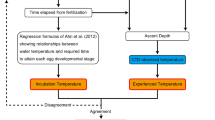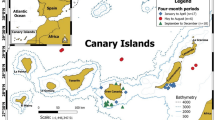Abstract
IT is a common belief in many fish-markets around the Mediterranean and in other parts of the world that the amount of edible matter in sea-urchins and certain other invertebrates varies with the phases of the moon. The animals are said to be “full” when the moon is full and “empty” at new moon. This belief was recorded by Aristotle, Pliny, and other classical writers, and was stated by them to apply not only to sea-urchins, but also to oysters and other molluscs.
This is a preview of subscription content, access via your institution
Access options
Subscribe to this journal
Receive 51 print issues and online access
$199.00 per year
only $3.90 per issue
Buy this article
- Purchase on Springer Link
- Instant access to full article PDF
Prices may be subject to local taxes which are calculated during checkout
Similar content being viewed by others
Author information
Authors and Affiliations
Rights and permissions
About this article
Cite this article
FOX, H. Lunar Periodicity in Reproduction. Nature 109, 237–238 (1922). https://doi.org/10.1038/109237a0
Issue Date:
DOI: https://doi.org/10.1038/109237a0
This article is cited by
-
Circadian and circatidal clocks control the mechanism of semilunar foraging behaviour
Scientific Reports (2017)
Comments
By submitting a comment you agree to abide by our Terms and Community Guidelines. If you find something abusive or that does not comply with our terms or guidelines please flag it as inappropriate.



